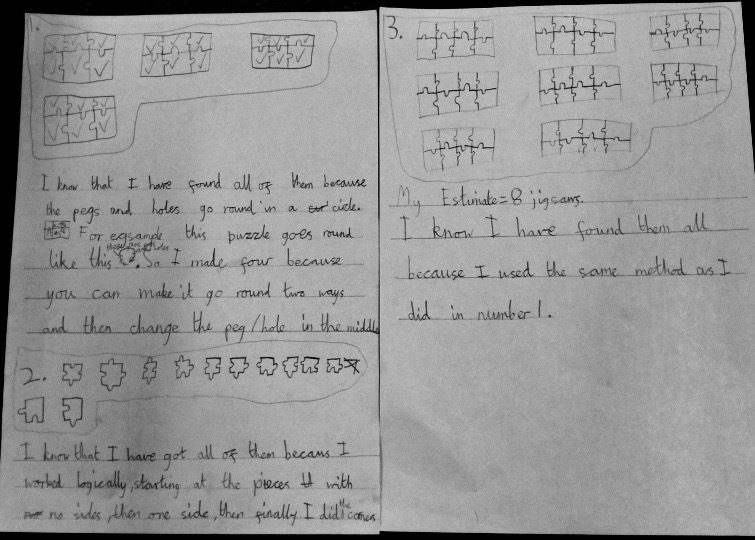Skip over navigation

Or search by topic
Number and algebra
Geometry and measure
Probability and statistics
Working mathematically
Advanced mathematics
For younger learners
Possible Pieces
Age 5 to 11
Challenge Level 





- Problem
- Getting Started
- Student Solutions
- Teachers' Resources
Yvonne from Kügeliloo School in Zurich Switzerland wrote to say they found eight solutions to challenge 1 and 32 solutions to challenge 3. It would have been good to see pictures of them.
Millie from Nene Valley Primary sent in her work with a picture:
First I tried to make one puzzle that worked, and then I realised that there was a pattern of pegs and holes. The pegs went round in a circle and so did the holes, so only the middle peg or hole could change, or the circle could go round the other way.
A larger more legible version is available here.pdf

Well done Millie, and thanks to Yvonne for her two answers. If you have a go at this challenge, let us know what you find out.
Millie from Nene Valley Primary sent in her work with a picture:
First I tried to make one puzzle that worked, and then I realised that there was a pattern of pegs and holes. The pegs went round in a circle and so did the holes, so only the middle peg or hole could change, or the circle could go round the other way.
A larger more legible version is available here.pdf

Well done Millie, and thanks to Yvonne for her two answers. If you have a go at this challenge, let us know what you find out.
You may also like
Geoboards
This practical challenge invites you to investigate the different squares you can make on a square geoboard or pegboard.

